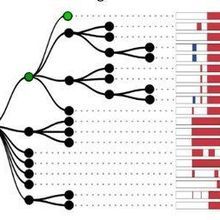Login
Subscribe404
Not Found
Is this what you were looking for?
tag genome developmental biology

Microfluidics: Biology’s Liquid Revolution
Laura Tran, PhD | Feb 26, 2024 | 8 min read
Microfluidic systems redefined biology by providing platforms that handle small fluid volumes, catalyzing advancements in cellular and molecular studies.
Top 7 in developmental biology
Bob Grant | Oct 4, 2010 | 3 min read
Check out the hottest papers in developmental biology and related fields, as ranked by F1000

Genomic Methylation Collector
Beth Marie Mole | Oct 21, 2012 | 2 min read
A parasitic worm accumulates epigenetic DNA tags over its lifetime.
A sea urchin genome project
William Wells(wells@biotext.com) | Aug 16, 2000 | 1 min read
Sea urchins are popular in developmental biology research thanks to their well defined embryology, the ease of gene transfer into eggs, and the abundance of eggs for biochemical work. Now the sea urchin genome project is off to a start with sequence from the ends of 76,020 bacterial artificial chromosome (BAC) recombinants. In the August 15 Proceedings of the National Academy of Sciences, Cameron et al. report that these sequence tag connectors (STCs) occur at an average of 10 kb apart in the s

Editing Genomes to Record Cellular Histories
Ruth Williams | May 26, 2016 | 3 min read
Researchers harness the power of genome editing to track cell lineages throughout zebrafish development.
Bioinformatics, Genomics, and Proteomics
Christopher Smith | Nov 26, 2000 | 10+ min read
Data Mining Software for Genomics, Proteomics and Expression Data (Part 1) Data Mining Software for Genomics, Proteomics and Expression Data (Part 2) High-throughput (HT) sequencing, microarray screening and protein expression profiling technologies drive discovery efforts in today's genomics and proteomics laboratories. These tools allow researchers to generate massive amounts of data, at a rate orders of magnitude greater than scientists ever anticipated. Initiatives to sequence entire genom

CRISPR Can Track Cellular History of a Mammalian Embryo
Sukanya Charuchandra | Aug 10, 2018 | 2 min read
Researchers used the genome-editing technology to analyze the development of mouse tissues.
Epigenetics: Genome, Meet Your Environment
Leslie Pray | Jul 4, 2004 | 10+ min read
©Mehau Kulyk/Photo Researchers, IncToward the end of World War II, a German-imposed food embargo in western Holland – a densely populated area already suffering from scarce food supplies, ruined agricultural lands, and the onset of an unusually harsh winter – led to the death by starvation of some 30,000 people. Detailed birth records collected during that so-called Dutch Hunger Winter have provided scientists with useful data for analyzing the long-term health effects of prenat
Prospecting for Gold in Genome Gulch
Amy Adams | Apr 14, 2002 | 9 min read
The human genome is much like the American West of the 1850s: Everyone wants a piece of the pie. Similar to gold prospectors of 150 years ago, biotech and pharmaceutical companies, and even universities, are frantically searching for the nuggets of gold that will help them find the mother lode—a gene whose function is sufficiently marketable to make all of the preliminary research worthwhile. Companies that do strike gold get to introduce new classes of drugs to the market. Others hope to
Playing Protein Hide and Seek
Mignon Fogarty | Apr 11, 2004 | 6 min read
LIGHTING THEIR LOCATIONS:© 2002 Cold Spring Harbor PressImmunolocalization of epitope-tagged proteins. (A-E) represent cells containing HAT-tagged proteins stained with the DNA dye, DAPI, and a monoclonal antibody against hemagluttinin, α-HA. At right the images are merged. (F-J) indicates cells carrying V5 tagged proteins. The bar equals 2 μm.Aliens sifting through the remains of a lost human civilization might puzzle over the function of a ladle. But if found in a room associate